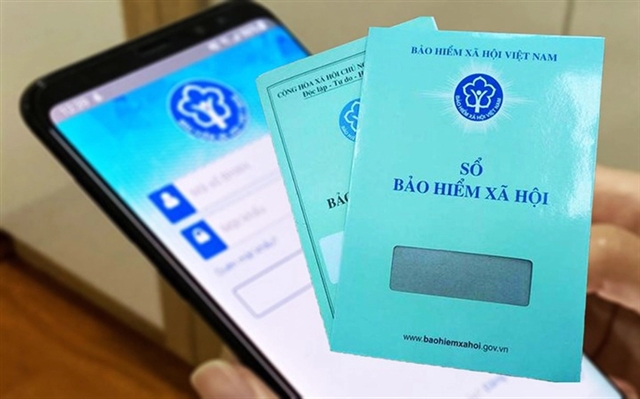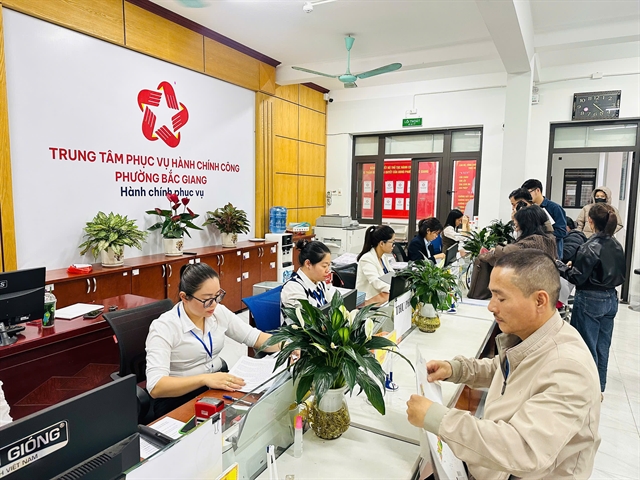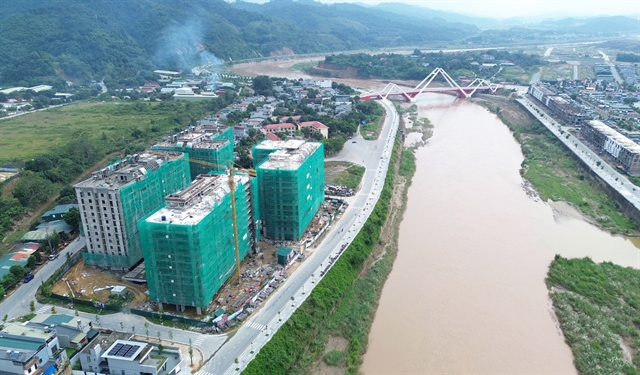 Society
Society

.jpg)
|
| A COVID-19 patient being treated at home in Long Hồ Town, Long Hồ District in southern Vĩnh Long province. — VNA/VNS Photos |
VĨNH LONG — Home treatment for mild and asymptomatic COVID-19 patients, with medical support from local health workers, has proved to be a solution to safely adapt to the pandemic in southern Vĩnh Long Province, helping patients feel more secure and reducing pressure on medical facilities, the provincial Health Department has said.
The department is focussing on training grassroots-level health workers, improving their capacity to correctly identify COVID-19 patients' health conditions and detecting abnormal cases for prompt intervention.
Vĩnh Long has applied home treatment for F0 cases since early December, when the number of COVID-19 infections rapidly increased to about 500 new cases per day, overloading to centralised treatment facilities.
Figures from the department showed that more than 26,000 F0 cases have been treated at home, and 70 per cent of that have fully recovered.
Of these cases, up to 96 per cent of COVID-19 patients have no symptoms or mild symptoms. Currently, the rate of vaccination against COVID-19 is rather high – 99.2 per cent of people aged 18 years and more have been fully jabbed and 94.4 per cent of children from 12 to 17 years old have got the second dose of the COVID-19 vaccine. The province is speeding up the injection of additional booster shots for people.
Mobile medical stations
The province has established more than 100 mobile medical stations, which coordinate with 107 local health centres and nearly 5,000 community COVID-19 prevention and control teams, to carry out care and treatment for F0 cases at home.
Health workers are in charge of testing, monitoring and taking care of patients while support teams guide people to properly quarantine to avoid cross-transmission in the family and the community.
In particular, the provincial health sector pays special attention to receiving and classifying COVID-19 cases to properly assess patients’ conditions and reduce fatalities.
In Bình Tân District, ten mobile health stations have been set up to receive and classify F0 cases for proper quarantine and treatment. Health workers will connect to patients to give timely advice and medical support such as bags of medicine and instructions for use, follow up patients’ development and hospitalise severe cases.
As a result, Bình Tân is the district with the lowest number of COVID-19 deaths. The whole province has reported 70 deaths so far.
Director of Bình Tân District’s Health Centre Nguyễn Hữu Phước said all patients with underlying diseases or severe symptoms are taken to a field hospital for treatment. Severe cases are hospitalised so that patients will get timely support in emergency cases.
Deputy Director of the Provincial Department of Health Hồ Thị Thu Hằng said up to 90 per cent of patients who have had two doses of vaccine do not need to use drugs and can recover within 10-15 days.
Nguyễn Thị Yến Thoa in Thành Trung Commune, Bình Tân District was one of those treated at home. After 14 days of following the instructions of local medical workers, she provided a negative test result.
Fortunately, none of her family members were infected with the virus.
“Quarantine at home made me feel comfortable as I could resume my daily life in my house. During the treatment period, the medical staff regularly visited and called me for medical advice. I feel much more secure,” she said.
.jpg)
|
| Cam Ngọc Trâm has recovered from COIVID-19 after quarantining at home. |
Cam Ngọc Trâm in Phú Đức Commune, Long Hồ District said she was very scared to stay at home at first.
“I was worried that if it got worse, I wouldn't know how to handle it, but the local medical staff called and gave me advice. This made me more mentally stable. After a period of treatment at home, I am now healthy enough to go back to work as usual,” she said.
Overloaded grassroots medical workers
Medical staff of the mobile health station of Phú Đức Commune are very busy these days, as they have to take on many tasks at the same time such as taking samples for testing, vaccinating, tracing and treating F0 cases.
Health worker Mai Thị Ngọc Phượng said she only stopped working when all the works had been done.
“There were cases that I had to go and talk many times to encourage them to go to centralised quarantine sites. I had to do it until they agreed as they would be in danger if the disease turned severe and was not treated promptly,” she said.
Head of the mobile health station Huỳnh Thị Nguyền said his team tried their best to bring oxygen tanks to patients in need of emergency and transfer them to hospital as fast as they could.
Vice-Chairman of Vĩnh Long City’s People's Committee Nguyễn Thanh Hà said that in the first three weeks of treating F0 cases at home, the number of new cases increased sharply, which overloaded grassroots medical staff.
Some were in charge of up to 800 patients at a time, while medical equipment remained inadequate.
Hà said the city has set up five more mobile medical stations to perform their tasks and mobilised ten more health staff to each station.
In addition, the city also has policies for frontline forces to help them work effectively.
“The efforts of the local medical force are great. Some have been ill due to being overworked or contracting COVID-19,” he said.
Deputy Director of the provincial Department of Health Hồ Thị Thu Hằng said the province has established a home care team for COVID-19 patients in Vĩnh Long City and Long Hồ District, which gave remote medical examination for patients via an app as a way to ease the pressure for local health workers.
Vice-Chairman of the provincial People's Committee Nguyễn Thị Quyên Thanh said the province has directed the health sector to strengthen capacity and equipment for mobile medical stations, to allow them to perform professional tasks and ensure home quarantining COVID-19 patients are provided with adequate medical care.
Overloaded local health workers are the reason why many patients said they were not able to immediately access medical aid when showing symptoms of illness or cross-infection in their families.
Thanh said the province has required the steering committees for COVID-19 prevention and control at all levels to ensure that each station can take care of the maximum of 100 F0 cases.
It has also asked the health sector to establish connections between community doctors through social websites so that people can access consultations.
The committee requested the health sector to review all conditions to ensure the operation of mobile medical stations and issue a number of policies to encourage the health workers at the grassroots level, she said. VNS




